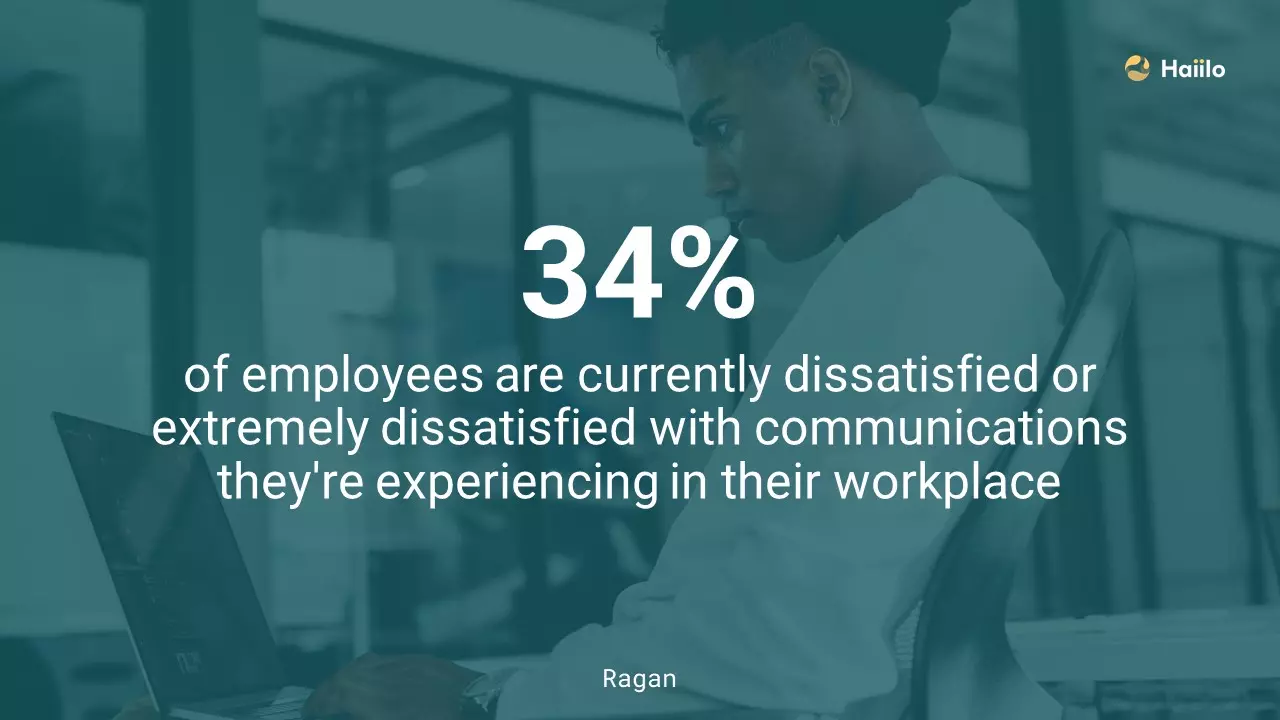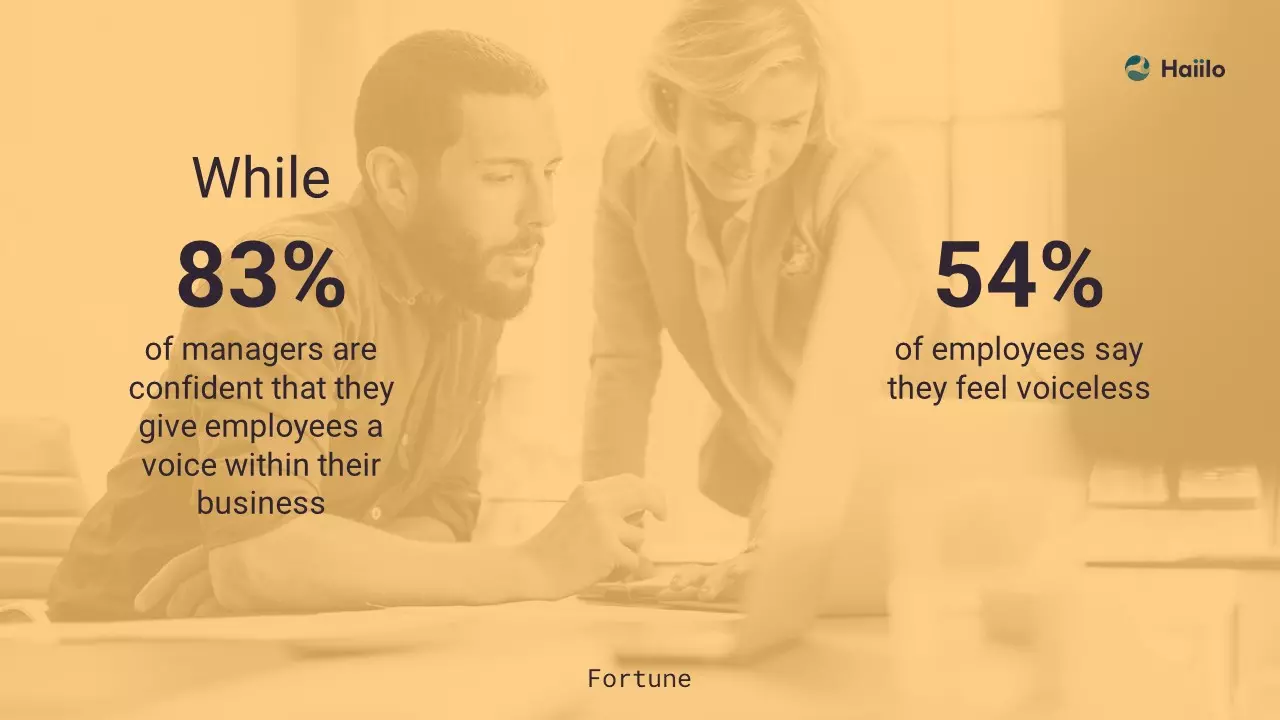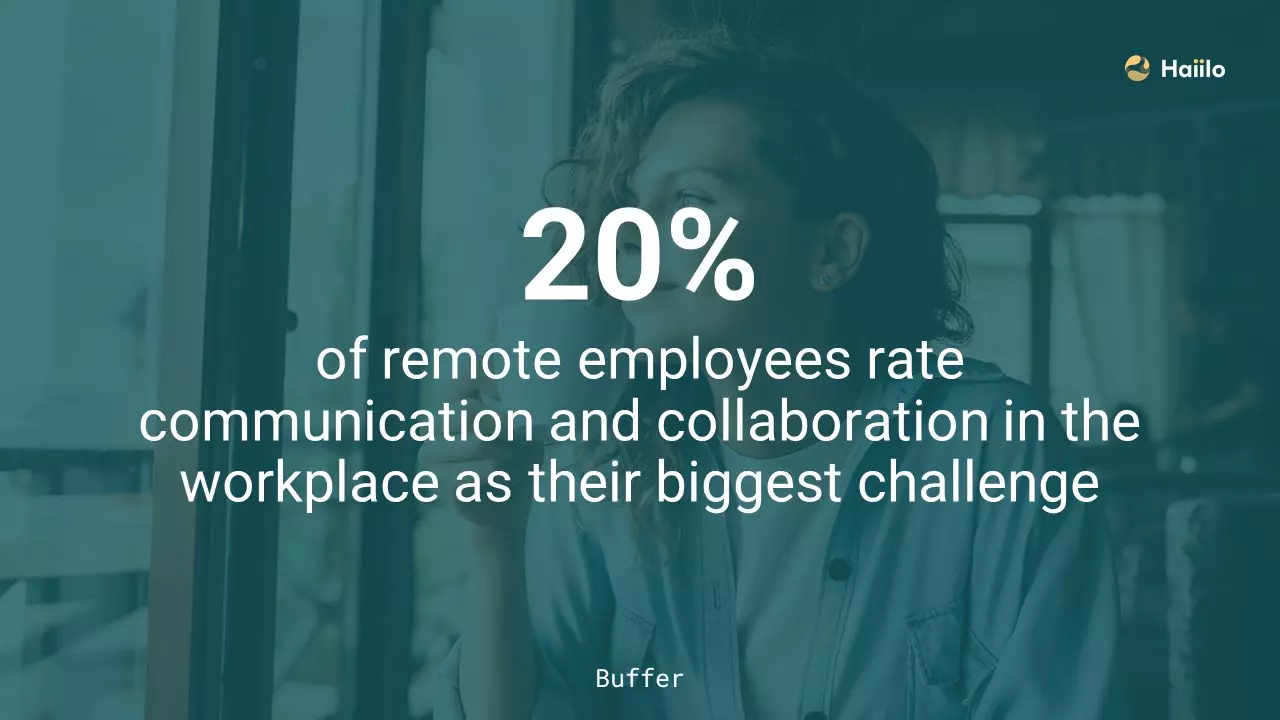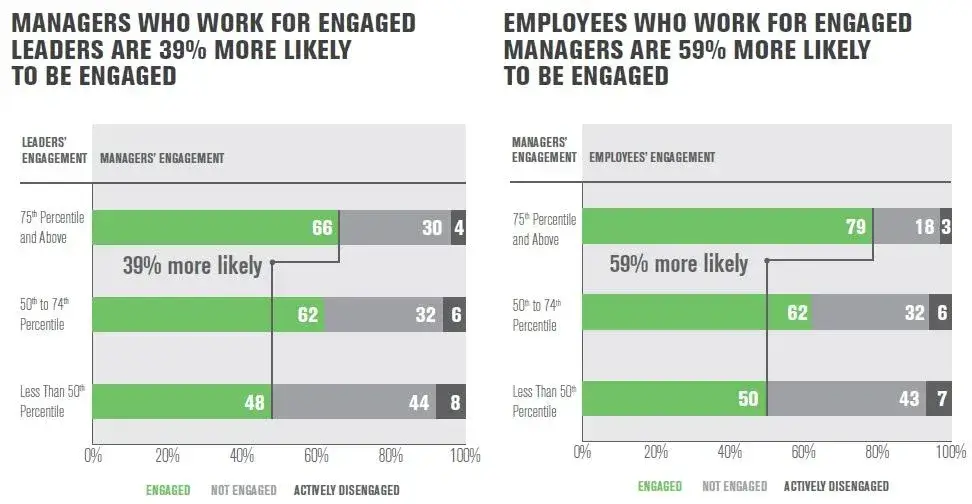Effective management communication is one of the biggest drivers for organizational success. Moreover, organizations with well-set management communications strategies have a significant competitive advantage over those who neglect the importance of communication in the workplace.
However, the way managers communicate with their teams has changed significantly. Managers are now dependent on online means of communication, and they must learn how to leverage technology to empower their employees.
In this blog, we will cover the most important benefits of effective managerial communication as well as some of the best practices for building, implementing, and managing a successful management communication strategy.

Management Communication Defined
Management or managerial communication is a function that enables managers to communicate effectively with their teams, build stronger relationships, improve employees’ experience and wellbeing, and continuously drive employees’ success in the workplace.
Support management communication in your company by using the right IC technology
But why is it important for managers to communicate effectively with their team members? Because “the manager accounts for at least 70% of the variance in employee engagement,” according to the ‘State of the American Manager report‘ by Gallup.
Even though managers are the most responsible for their employees’ success, 71% of employees believe that their leaders do not spend enough time communicating goals and plans.

Managers have a big responsibility to transfer critical information to their teams and smoothen the flow of information in the organization. Hence, one of the biggest goals for every manager should be to develop critical communication skills and use the right communication technology in order to keep their teams informed, updated, and aligned with the strategic business goals.
8 Ways to Improve Management Communication in the Workplace
Even though many organizations are well aware of the importance of effective management communication, many of them are struggling to enable and empower their managers to improve communication in the workplace.
As communication preferences among employees can vary significantly and change continuously, managers need to adjust to these changes in order to keep their workers motivated, engaged and productive.
Let’s take a look at some of the best communication practices every manager should consider.
1. Communicate frequently, transparently, and be approachable
There are four golden rules for effective management communications:
- Provide clarity – Confusion, uncertainty, and ambiguity make people uncomfortable, insecure, and noncooperative. Managers are responsible for providing information employees need to succeed and to understand their contributions to the organization.
- Communicate frequently – Management communication is not a check-the-box type of activity. Moreover, employees prefer to hear messages multiple times.
- Strive for transparency – Every employee wants to be aware of their contribution to the overall business success, and stay informed about the important company updates and events.
- Be approachable – A good manager is easy to engage and communicate with. Hence, managers should always look for ways to be approachable and drive employees’ share of voice.
2. Adjust communications to you multigenerational workplace
Today, many managers deal with employees from different generations. Five of them, to be precise. All these generations have different preferred ways of communication in the workplace. For managers, it is crucial to understand those differences and adjust their communications efforts and styles.
A study from Robert Half Management Resources revealed that communication preferences among generations can vary significantly:
- Baby Boomers prefer face-to-face or phone conversations in the workplace, while the members of generation X typically rely on email or texting to communicate with their co-workers.
- Millennials prefer online means of communication which mostly include modern employee communications solutions that mimic popular social media platforms.
- Generation Z employees prefer online means of communication, and they prefer easy to consume types of content such as video.
- Millennials and gen Z employees are used to having personalized news feeds and they expect the same experience in the workplace.
- Millennials appreciate authentic and fast communications; they value efficiency and a digital-first approach.
- Gen Z employees appreciate transparent and visual communications, and they prefer to communicate via their smartphones.
📚 Also read: The Ultimate Guide to Managing a Multigenerational Workforce.
3. Encourage employees to speak up
While 83% of managers are confident that they give employees a voice within their business, more than half of employees (54%) say they feel voiceless.

Unfortunately, many employees still don’t feel empowered enough to raise their concerns, share their ideas, and come up with new solutions. The way managers drive communication within their teams is the biggest culprit for such an unhealthy workplace environment.
Effective management communication is the one in which information doesn’t flow one-way. Rather, it encourages employees to continuously participate in daily conversations on both team and organizational levels.
Employee listening and share of voice are some of the biggest prerequisites for shaping positive employee experience in the workplace, and managers are the ones responsible for delivering such experience.
4. Personalize communications based on your employees’ needs and interests
The biggest reason for employee disengagement with their manager’s communication is the lack of personalization. Employees expect personalized and targeted communications from their leaders. Yet, many managers are still failing to adjust their communications efforts to their employees’ specific needs and interests.
Managers should be able to create and provide personalized news feeds for their workers with everything they need to stay informed and do their jobs successfully.
Additionally, communication in the workplace needs a creative touch to it in order to be more efficient. Creating communications in the forms of videos and infographics can go a long way in driving higher employee engagement.
5. Pay special attention to your remote, frontline, and blue-collar employees
Today’s workplaces are highly dispersed, and this is one of the biggest challenges that managers face now. Keeping dispersed employees connected, inspired, updated, safe, and motivated is not an easy job.
When employees were asked about their biggest challenge with remote work, communication and collaboration was their number one concern. Effective remote communication has, therefore, become one of the biggest priorities for managers across the world.

Ensuring that the right message reaches the right employee at the right time may seem impossible for managers in some large enterprises.
Luckily, modern employee communications technology can empower managers to always stay connected with their teams no matter their locations.
6. Enable mobile-first communication
With the emergence of remote work, social distancing, and dispersed workforce, mobile-first communication in the workplace has become a must. Managers and employers need to adjust to this new trend by providing their employees with an easy and instant access to important information directly from their smartphones.

Managers need to be aware of the benefits of implementing mobile-first employee communication technology and have a better understanding of how these tools are transforming organizational culture and employee behavior.
📚 Read more about how to manage a digital workforce.
7. Measure the impact of your communications efforts
One of the biggest pain points of every management communications strategy is the inability to measure the impact and effectiveness of workplace communications. Managers just don’t have ways to tie their communications efforts to specific KPIs.
However, modern and AI-powered employee apps like Haiilo Stories provide a way for managers to connect their communication campaigns with some specific business objectives. Communication in the workplace can finally be measured!
8. Implement the right communications technology
A fragmented communications ecosystem can cause disengagement with management communications. Internal communications technology has become extremely complex, and it often causes confusion, frustration, and misalignment among employees.
This is why many employers and managers are now looking for solutions that can provide an easy way to connect various communication channels in the workplace, and give employees a single source to stay informed.
Why Management Communication is so Important
Only 13% of employees strongly agree that the leadership of their organization communicates effectively with the rest of the organization. According to the Gatehouse State of the Sector 2020 report, 41% of internal communication respondents said poor line manager communication skills were one of the top 3 barriers to IC success in their organization.

Yet, according to the James Lukaszewski newsletter, 30% of employee information comes to these employees through their boss, ahead of any other sources:
- 5% CEO
- 6% Senior management
- 7% Upper management
- 8% Middle management
- 30% First line supervisors
- 25% ‘The person next to me at work’
- 19% ‘I made it up’ – probably comprising exaggeration, gossip, and rumor
It is obvious that management communication is one of the most critical aspects of every business, and it can have a significant impact on the following.
Building trust in the workplace
Research with 33,000 individuals in 28 countries showed that almost 1 in 3 employees don’t trust their employers, while another study by EY found that number to be even lower. Only 46% of people had trust in their organization and only 49% in their boss/team.
Therefore, effective management communications play a critical role in building trust and better employee-manager relationships.
Driving employee engagement and success
To unlock a team’s abilities, according to McKinsey, a manager at any level must be very engaged and spend a significant amount of time on two activities: helping the team understand the company’s direction and its implications for team members – and coaching for performance.
However, many managers themselves are not engaged enough.
The lack of engagement among managers has a big impact on engagement among employees. Essentially, managers’ engagement directly influences their employees’ engagement, creating a ‘cascade effect,’ and the link between the two is powerful, with major consequences.

Improving employee collaboration and productivity
28% of professionals say that poor communication is the number one reason for failing projects, and McKinsey’s research shows that when employees are connected, productivity grows by 25%.
As it is the manager’s job to keep their employees connected and frequently communicate with their employees, they are also held responsible for their workers’ productivity.
Ensuring workplace alignment
According to the previously mentioned Gallup survey, 22% of employees strongly agreed the leadership of their organization had set a clear direction for the organization, and 15% of employees strongly agreed the leadership of their organization made them enthusiastic about the future.

Effective management communication is what drives and empowers employees to work towards the same organizational goals.
Attracting new talent and enabling brand advocates
When employees work with great managers, they are much more likely to talk about their bosses and employers with others. Moreover, these people often become advocates and brand ambassadors.
As employees’ words are more trusted than those coming from corporate communications, managers with brand ambassadors among their teams are more likely to also attract new talent, drive sales, and more brand awareness.
📚 Read on: How to Succeed in Social Recruiting with Employee Advocacy.
Retaining high performers
Managers who focus on improving communication with and among their teams are much more likely to prevent their high performers from leaving the organization.
Informed employees who have good relationships with their managers are more satisfied with their jobs as they often have a better understanding of how their work contributed to the overall company’s success.
Driving innovation and creativity
45% of employees agree that overcoming the middle management “permafrost” layer is one of the top challenges companies face to successfully innovate. Managers should facilitate innovation in the workplace by encouraging employees’ empowerment, share of voice, and two-way communication.
📚 Learn more about why managers should encourage bottom-up feedback from their employees.
Improving change management
Efficient management communication is one of the main prerequisites for successful change management. According to Gartner, communications leaders report managing change fatigue as their top mission-critical priority.

Key to this is an effective change communications strategy that delivers the right information and resources, and enables managers to act as change accelerators on their teams.
As most people are resistant to change, managers are responsible to get employees’ buy-in by clearly communicating the benefits of the change.
A proper change communication strategy focuses on aligning employees with the business goals and strategy, and it should always answer the question every employee has: “What’s in it for me?”
Ensuring workplace compliance and safety
Effective management communications can significantly improve safety in the workplace and ensure that employees follow their company’s policies and procedures.

However, building a strong compliance culture embedded in each employee is not an easy task.
Luckily, employee communications platform like Haiilo Stories can make communicating with staff easier and more streamlined – from announcing new policies or important updates to reinforcing behaviors through engaging, visually-rich communications campaigns.
Top 15 Management Communication Skills
In this blog, we learned about the importance of management communication as well as some best practices that can help managers improve communication efforts with their teams. Now, let’s recap with some of the most important communication skills and characteristics that successful managers posses:
- Active listening
- Making information relevant
- Coaching
- Delivering timely information
- Defining clear purpose and direction
- Setting and communication clear goals
- Communicating persuasively
- Using storytelling to communicate
- Ensuring alignment among team members
- Empowering employees to speak up and innovate
- Motivating and engaging employees through authentic communication
- Understanding various communication channels and understanding how employees use them
- Understanding employees’ communication preferences and styles
- Measuring the impact of management communications
- Enabling easy collaboration among the team members










